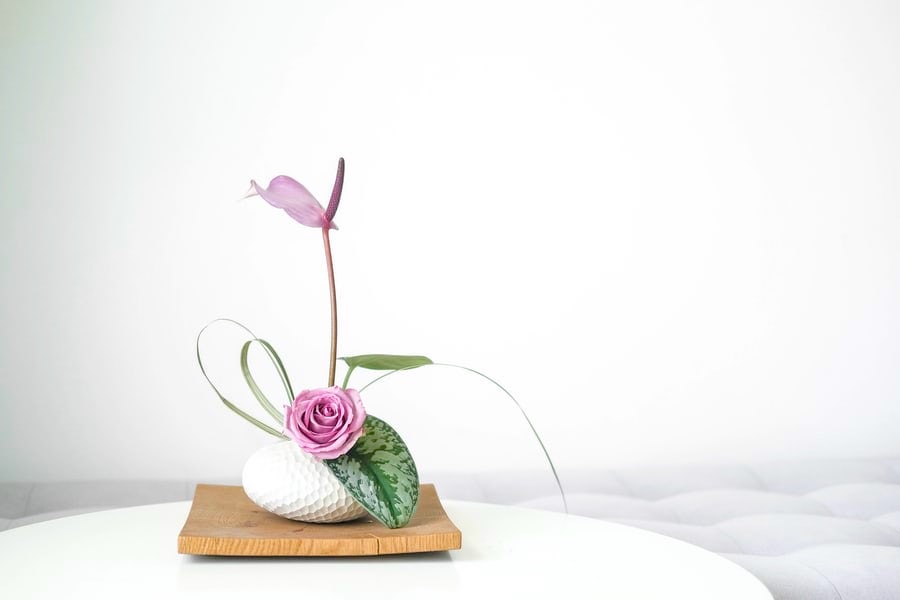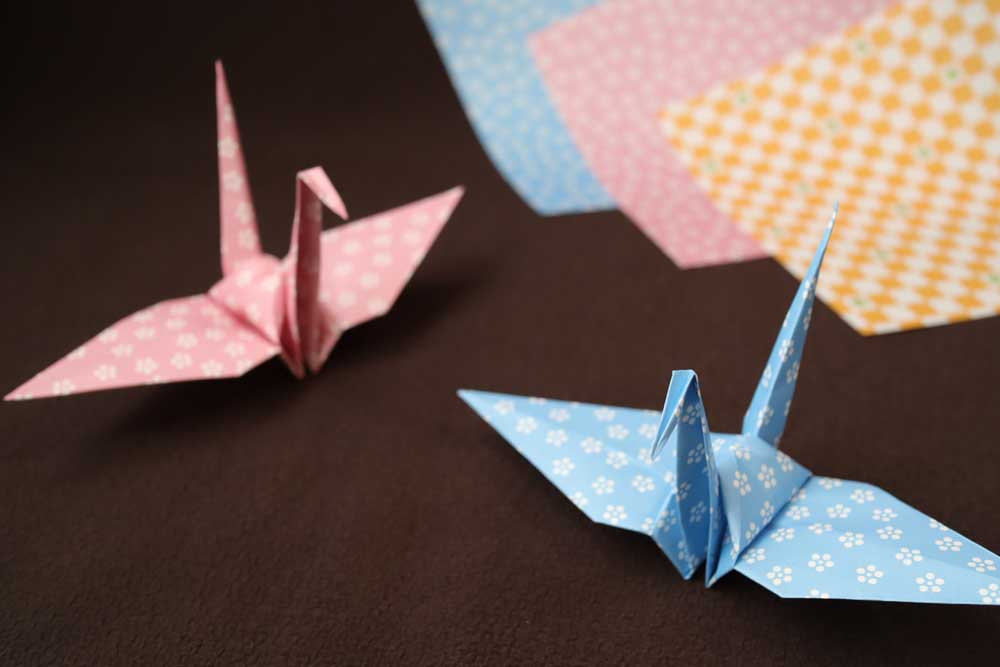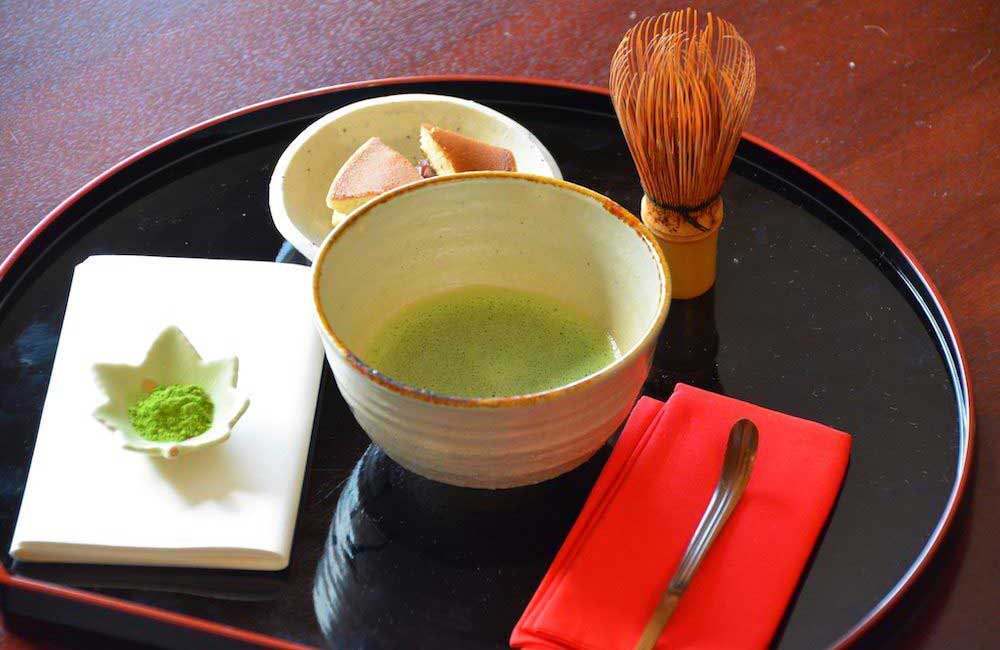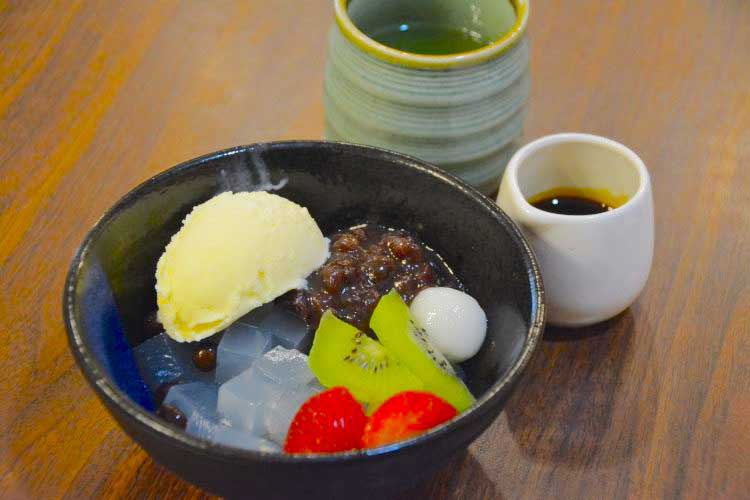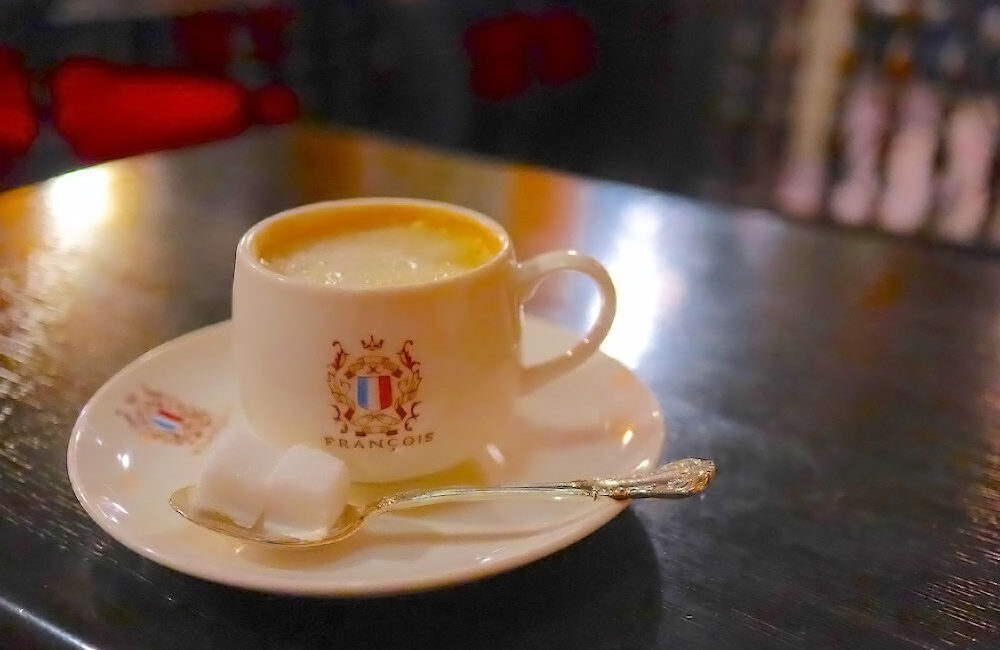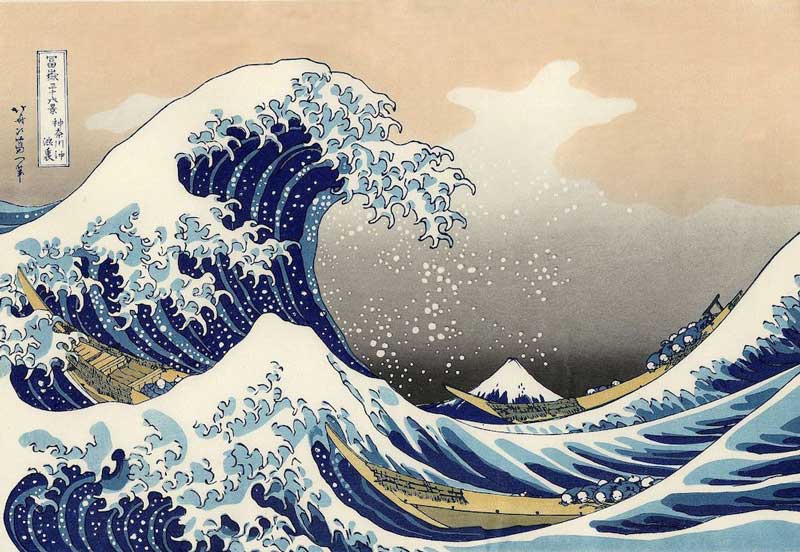
「浮世絵」とは、江戸時代初期に成立し、特に庶民の間で栄えた日本の風俗画の一種で、葛飾北斎や歌川広重などの有名画家を生み出し、印象派の巨匠たちにも多くの影響を与えたことで知られています。
現代では日本よりも海外で人気が高く、「日本らしい」「日本でしか買えない」ということで、浅草や京都などでは浮世絵をモチーフにしたお土産がたくさん売られており、レプリカの絵画はもちろん、Tシャツ、タオル、トランプ、マグカップなど、外国人観光客の方々にとってはとてもクールに映るようです。
今回は、そんな浮世絵について英語で説明する表現をご紹介します。
ご興味のある方は、当サイトで 英語クイズ(5000問) を出題しておりますので是非ご覧ください。
目次
浮世絵の簡単な説明
浮世絵は忍者などと同じく世界的に有名なため、多くの場合 Ukiyo-e で通じますが、「日本の江戸時代に発展した絵画のジャンル」であることを添えると良いでしょう。
「浮世」はもともと、平安時代の「苦しい」や「辛い」を意味する「憂し」の連体形「憂き」に世がついた「憂き世」が語源でしたが、江戸時代に入る頃になると「享楽的」「好色的」の意味を持つ「浮き世」の意味で使われるようになったのだそうです。
浮世絵には版画と肉筆がありまして、肉筆画は一点もののため非常に高価でしたが、版画は大量生産が可能で低価格であったため庶民の間に広まりました。
しかしながら、浮世絵は日本において「芸術作品」とされていなかったため、例えば摺り損じのものなどは、ヨーロッパへ陶磁器を輸出する際の緩衝材に使われるほどだったそうで、海外の印象派の画家たちや芸術作品収集家に評価されて初めて、その価値が認められるようになりました。
a genre of pictures depicting the daily lives of commoners during the Edo Period
(江戸時代の庶民の生活を描いた絵画の分野)
Ukiyo-e was developed by Hishikawa Moronobu in the 17th century.
(浮世絵は17世紀に菱川師宣によって大成されました。)
Ukiyo-e is a genre of Japanese art that flourished during the Edo period (1603〜1867).
(浮世絵とは、江戸時代に盛行した日本絵画の分野のひとつです。)
The term ukiyo-e translates as “picture of the floating world.”
(浮世絵という語は「浮いた世界の絵」と訳されます。)
Ukiyo means literally the floating world, or the common, secular side of life.
(浮き世とは、文字通り浮いた世界、すなわち俗世界を意味します。)
The word ukiyo refers to “this life” or “the real world.”
(浮き世とは「世の中」や「現実世界」を指します。)
Ukiyo-e is a genre style of (original) painting or woodblock printing that was developed during the Edo period in Japan.
(浮世絵とは、日本の江戸時代に発展した肉筆画または版画のことです。)
Ukiyo-e are paintings developed in the Edo Period, most of which became widespread as woodblock prints.
(浮世絵とは、江戸時代に発展した絵画で、多くは版画として普及しました。)
The notable feature of Ukiyo-e is its bright colors and bold compositions.
(浮世絵の特筆すべき特徴は、鮮やかな色と大胆な構図です。)
People got the latest information about fashion and various events from ukiyo-e.
(人々は浮世絵からファッションや様々な出来事などの最新情報を得ていました。)
Ukiyo-e has two variations, “nikuhitsu” (handwritten painting) and “nishiki-e” (colored woodblock print).
(浮世絵は、「肉筆」と「錦絵」とがあります。)
Ukiyo-e had a great influence on Impressionism and art nouveau in Europe in the late 19th century.
(浮世絵は、19世紀後半のヨーロッパ美術の印象派やアールヌーヴォーへ多大な影響を与えました。)
Ukiyo-e art is also known for influencing Europe’s impressionist painters.
(浮世絵の画法は印象派の巨匠画家たちに影響を与えたことでも知られています。)
Ukiyo-e depicted clear outlines, using almost no shading or shadows.
(浮世絵は輪郭をはっきり描き、陰影をほとんど使いません。)
Nikuhitsuga (original paintings) were produced one by one and thus were very expensive, but as woodblock prints were mass-produced and affordable, they were popular amongst commoners.
(肉筆画は一点もののため非常に高価でしたが、版画は大量生産でき手頃な価格であったため庶民の間で人気を集めました。)
However, the Japanese people did not recognize the artistic value of ukiyo-e and so some were used as packing material for Japanese ceramics and other items exported to Europe.
(しかし、日本の人々は浮世絵に芸術的価値を認識していなかったため、陶磁器などのヨーロッパ輸出用の梱包材として使用されることもありました。)
Ukiyo-e first appeared in Europe as packaging material used to protect valuable chinaware, but they attracted the interest of impressionist painters and art collectors, and were soon imported for their own sake.
(浮世絵はヨーロッパにおいて、貴重な陶磁器の緩衝材として初めて登場しましたが、印象派の画家たちや芸術品収集家の関心を集め、自分たちのために輸入されるようになりました。)
浮世絵の種類
Common subjects of ukiyo-e included female beauties, kabuki actors, sumo wrestlers, scenes from history, landscapes, and erotica.
(浮世絵の主な画題は、美女、歌舞伎役者、力士、歴史画、風景、春画などです。)
- 美人画:Portraits of Beauties
- 役者絵:Portraits of Actors
- 風景画:Landscape Pictures
- 芝居絵:Painting of kabuki play
- 相撲絵:Portraits of sumo wrestlers
- 武者絵:Portraits of warriors
有名な浮世絵師
隆盛期に活躍した有名な浮世絵師5人を、簡単な英語で説明しています。
葛飾北斎 / Katsushika Hokusai(1760〜1849)
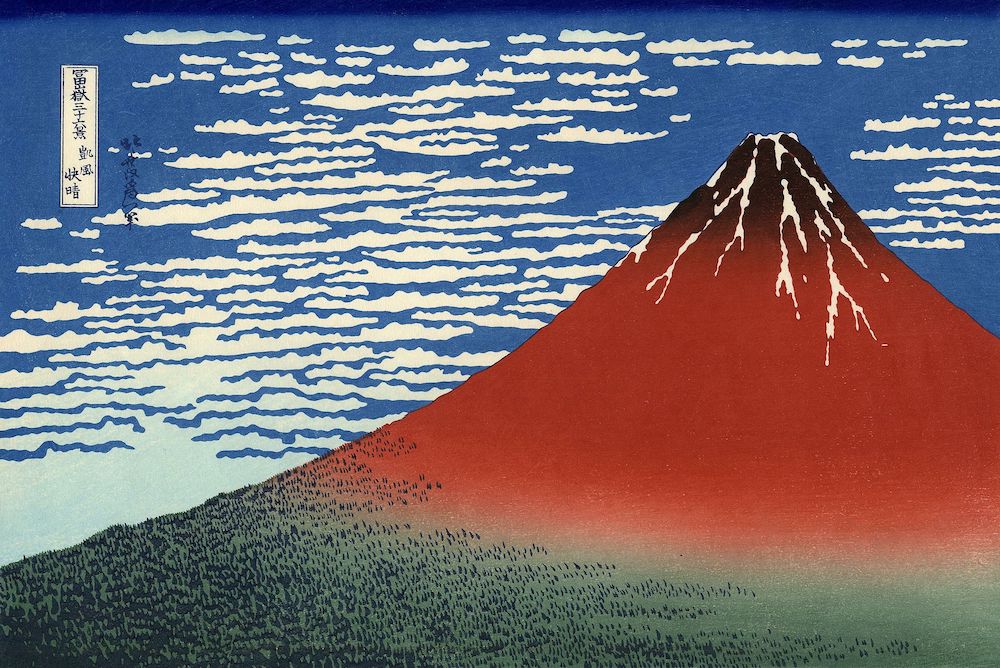
Katsushika Hokusai, known simply as Hokusai, was one of the greatest masters of Japanese Ukiyo-e and represents the Edo Period. He produced over 30,000 works in his life.
(葛飾北斎は、江戸時代を代表する浮世絵師の巨匠の一人です。生涯で三万点以上の作品を制作しました。)
He was also a highly influential figure, not only in his homeland but also in Western painting.
(彼は日本だけでなく、西洋画においても非常に影響力のある人物でした。)
歌川広重 / Utagawa Hiroshige(1797〜1858)
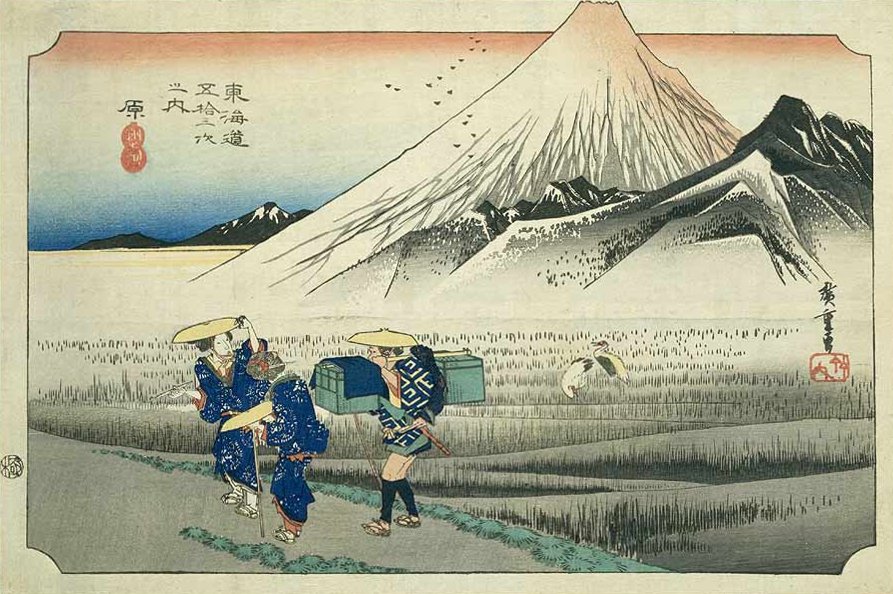
Utagawa Hiroshige was a Japanese ukiyo-e artist of the Edo Period and was best known for his landscapes, such as the series “The Fifty-three Stations of the Tōkaidō” and “The Sixty-nine Stations of the Kiso Kaidō.”
(歌川広重は江戸時代の日本の浮世絵師で、「東海道五十三次」や「木曽海道六十九次」などの風景画で最もよく知られています。)
Vincent van Gogh was well known for painting copies of his prints.
(ヴィンセント・ヴァン・ゴッホが彼の版画を模写していたこともよく知られています。)
歌川国芳 / Utagawa Kuniyoshi(1797〜1861)
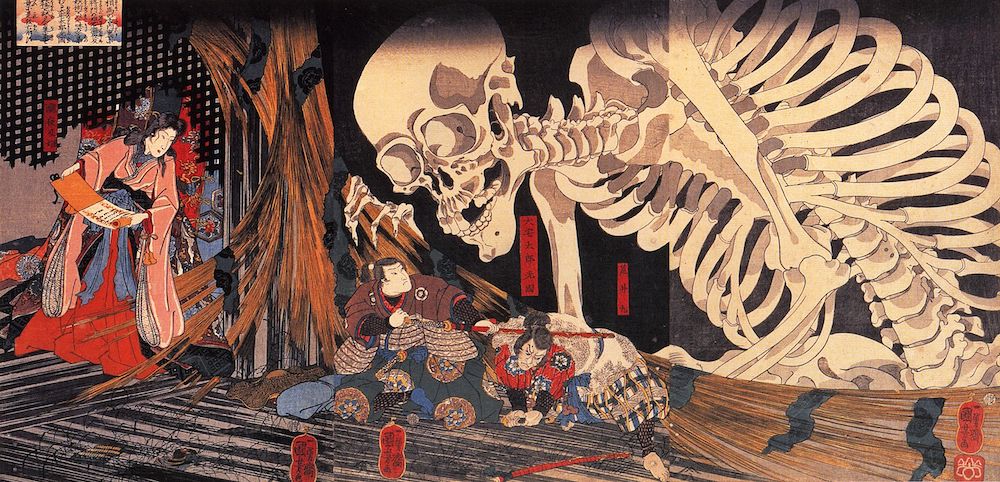
Utagawa Kuniyoshi is one of the outstanding Ukiyo-e artists of the late Edo period in the 19th century.
(歌川広重は、19世紀の江戸時代後期の特に傑出した浮世絵師の一人です。)
Kuniyoshi worked in all genres, producing landscapes, charming beautiful women, Kabuki actors, cats, and mythical animals.
(風景画、美人画、歌舞伎役者、猫、神話の動物など、あらゆるジャンルで活躍しました。)
喜多川歌麿 / Kitagawa Utamaro(1753?〜1806)
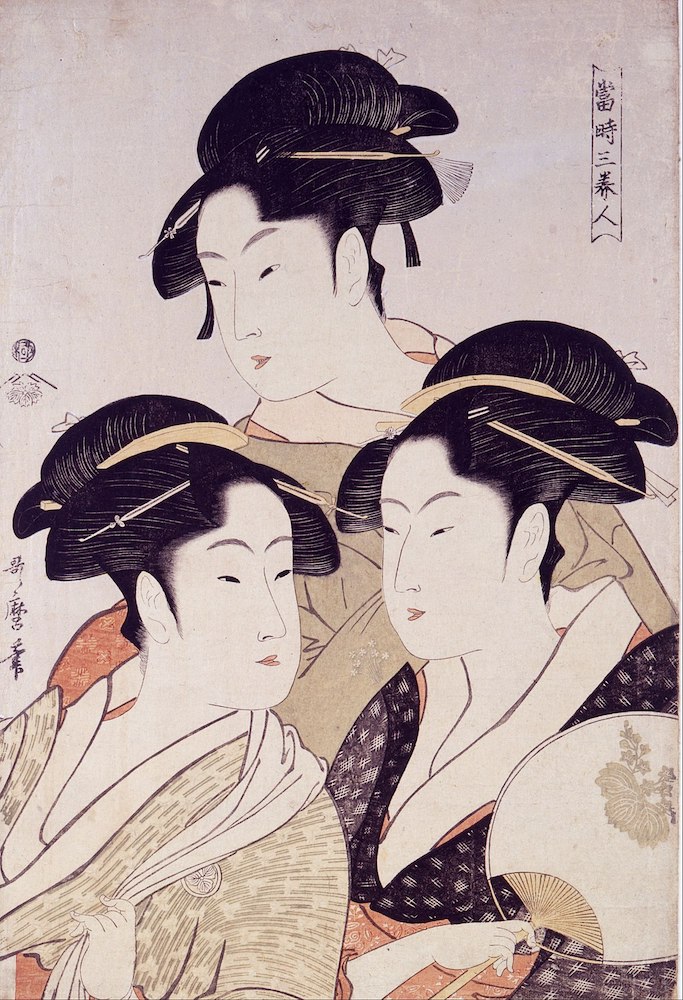
Kitagawa Utamaro is one of the greatest Ukiyo-e artists of the late 18th century and is best known for his depictions of bijin-ga (beautiful woman portraits).
(喜多川歌麿は、18世紀後半の非常に優れた浮世絵師の一人であり、美人画で最もよく知られています。)
東洲斎写楽 / Tōshūsai Sharaku
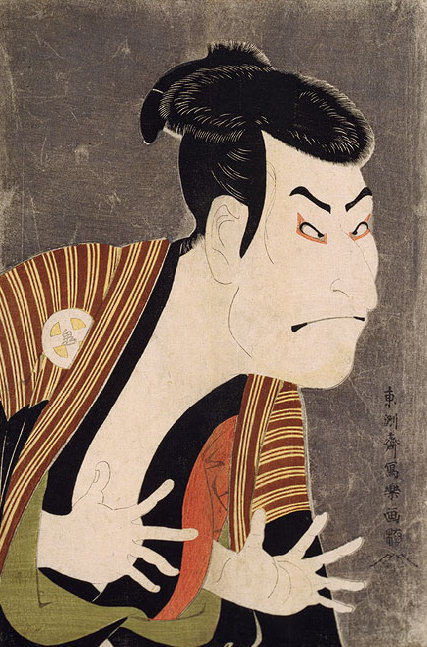
Tōshūsai Sharaku is a Japanese Ukiyo-e artist of the Mid-Edo Period, known for his portraits of kabuki actors.
(東洲斎写楽は、江戸中期の浮世絵師で、歌舞伎役者の役者絵で知られています。)
Sharaku produced some 140 works within only ten months, and then he disappeared abruptly and mysteriously.
(写楽はわずか10ヶ月の間に140ほどの作品を残し、その後不思議なことに突然姿を消しました。)
浮世絵の製作過程
Ukiyoe requires the work of painters, engravers, and printers.
(浮世絵は、絵師、彫り師、摺り師の作業が必要です。)
1. Eshi (painter) draws a draft and a block copy.
(絵師が下絵と版下を描きます。)
2. Horishi (carver) pastes the block copy on the block, engraves the block and prints in black.
(彫り師が版木に版下を貼って彫り、墨一色で摺ります。)
3. Eshi indicates the colors to be used on the print.
(絵師が摺ったものに色の指定をします。)
4. Horishi engraves as many blocks as the number of colors.
(彫り師が、色の数の分だけ版木に彫り起こします。)
5. Surishi (printer) applies paint over the carved block with a brush.
(摺り師が版木に刷毛で顔料を塗ります。)
6. Surishi prints the painting on the same paper, color by color.
(摺り師が色の数だけ同じ紙に摺り重ねます。)
最後に
いかがでしたでしょうか。
摺り損じの浮世絵が、輸出貿易において緩衝材になっていたことで海を渡り、ヨーロッパで知られるようになったというのは大変興味深いですね。
そして絵画や音楽などの芸術は、言葉の壁を簡単に超えてしまうものですので、異文化を説明するテーマとしては最も適しているとも言えるのではないでしょうか。
皆さんも是非、ご自身の感性を大切にしながら国際交流を楽しんでいただければと思います。
